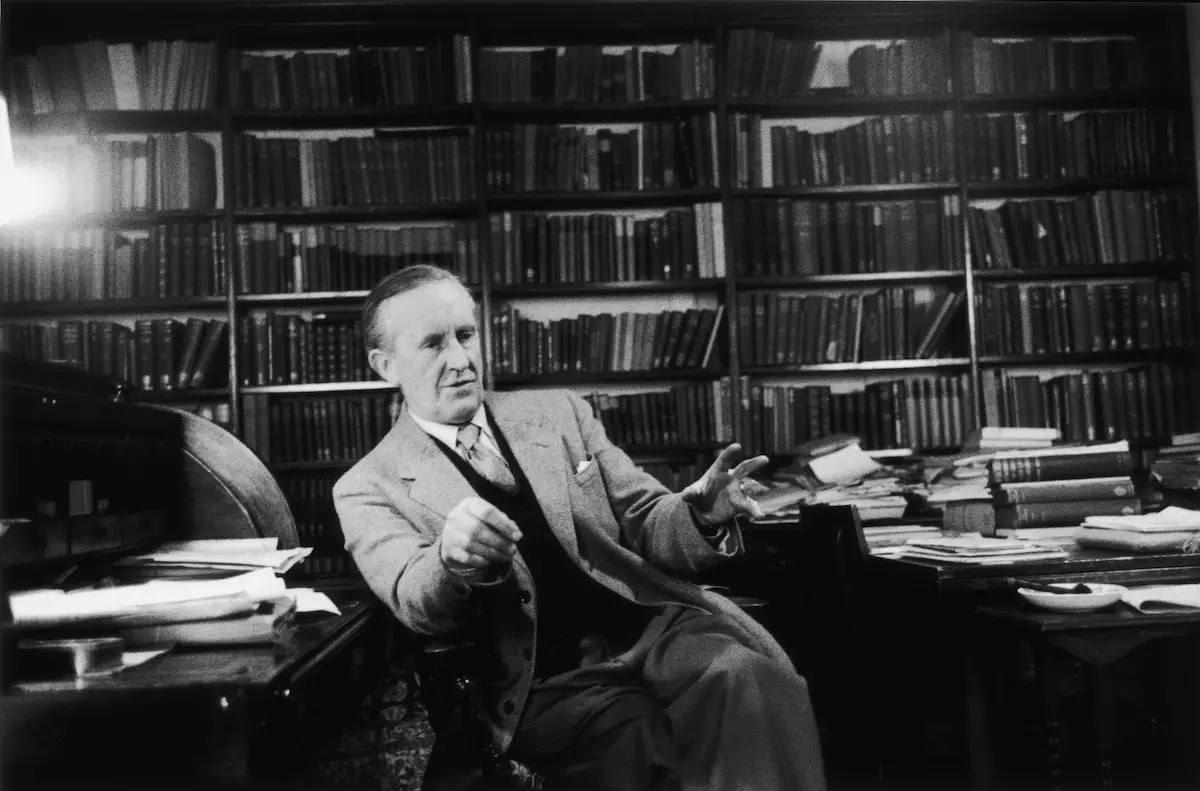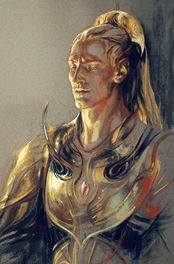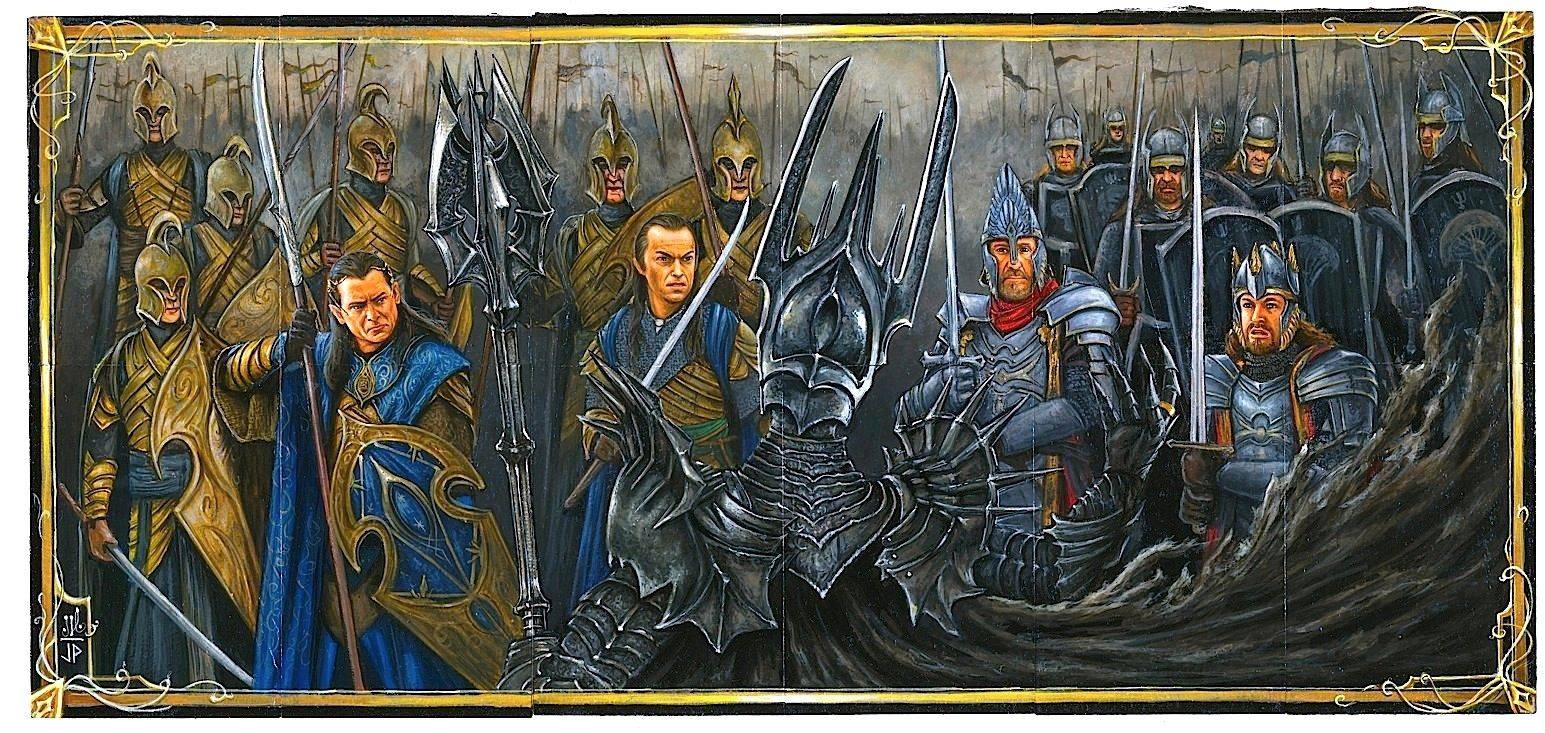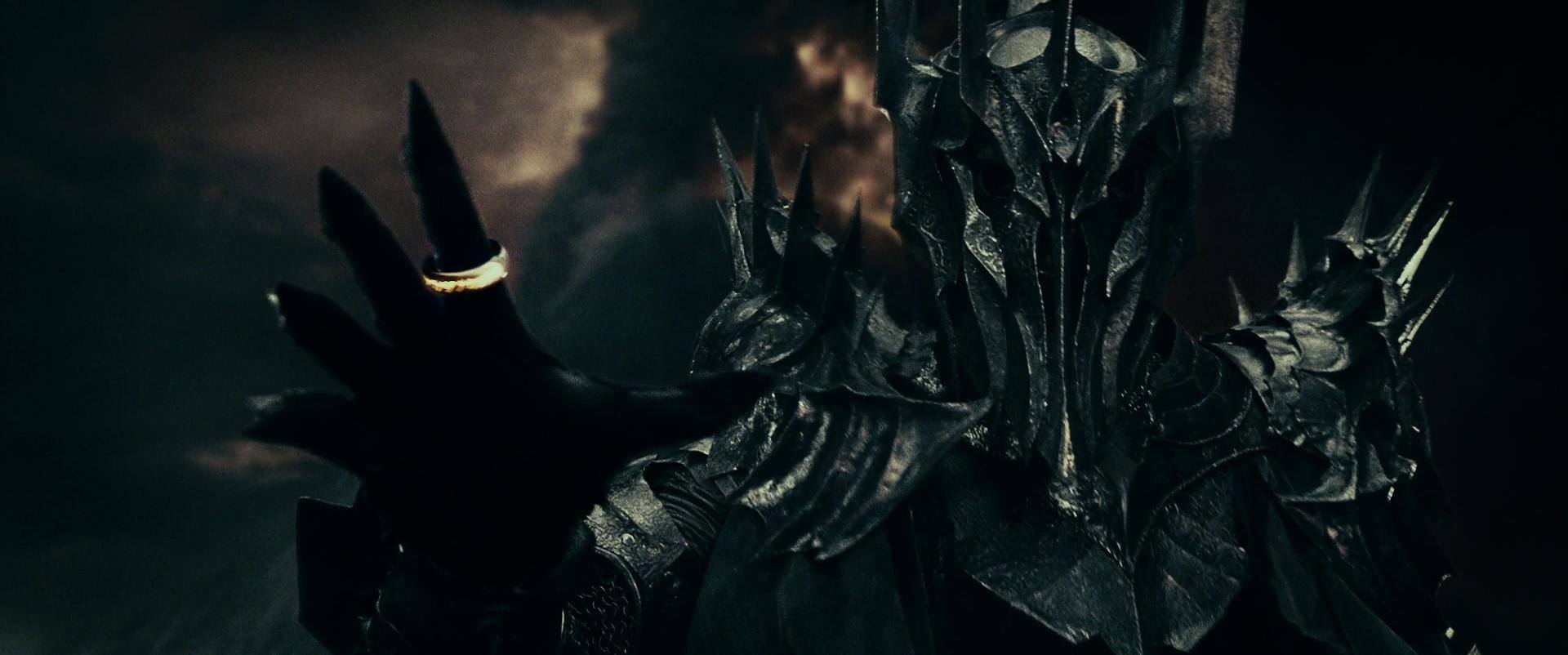An examination of the demiurgic aspects of the Dark Lord of Middle-earth. The One Ring as a symbol of the Saturnian will to subjugation, which has its manifestation in the control of time.
di Andrew Casella
cover: Eye of Sauron, illustration by JRR Tolkien
“Once upon a time there was Sauron the Maia, whom the Sindar of Beleriand called Gorthaur. At the beginning of Arda, Melkor seduced him by obtaining his fidelity, and he became the greatest and most trusted servant of the Enemy, as well as the most dangerous, since he was able to assume many forms, and for a long time still succeeded, when he wanted to, to appear noble and beautiful so as to deceive anyone except the most astute. "
The Silmarillion
The considerations on the work of J.R.R. Tolkien that you go on to do do not claim to be explicitly reflected in it. It is possible (indeed, probable) that these are simple coincidences, which give life to suggestions, as strong as one likes, but inane. And on the other hand, is it not that, after all, the paths followed by the human mind, which digs into the abyss of archetypes, are always the same? Could it not be that the same seeds of the unconscious are able to put to good use both a work of literary entertainment and a religious work?
It is impossible, when speaking of Tolkien's work, not to be tempted to attribute a religious significance. The declared Catholicism of the same author is a strong mortgage in this sense, and, after all, the creation of a world completely "other" than ours, in full compliance with the canons of the genre fantasy, as a rule, imposes the exposure on "who" and "how" created that world.

What we could define the “Tolkien BibleIs undoubtedly The Silmarillion, which opens with an unambiguous:
«There was Eru, the One, who in Arda is called Ilùvatar; and he first created the Ainur, Those who are holy, offspring of his own thought, and they were with him before anything else was created. "
A unique god (a god of monotheism) exists ab eternal, uncreated, omnipotent: it is known by the name of Eru Ilúvatar by those who worship him; they spring from the thought of him The ainur, an angelic host of creatures inferior only to him. To them Ilùvatar proposes gods musical themes, and on this basis they begin to sing. The only voice that suddenly rises dissonant is that of the most powerful of all the Ainur, Melkor, burning with the desire to create one's own things in the regions of the Void ignored by Ilùvatar, regardless of the address given by them. The power to create, however, the Undying Flame, is only with Ilùvatar, so that nothing conceived by Melkor can come into autonomous existence.
The music of Ainur (Ainulindalë), without even they expected it, gives life to a new world, floating in the void, which is given the name Arda (the planet Earth, we would say); the world, it seems, must always originate from sound, be it the Word or a Song. Slowly, Melkor passes from shame at Ilùvatar's reproaches to secret anger, until he finally degrades from an angelic creature to a demonic being, changing his name to Morgoth and conceiving as his sole objective that of scarring, disfiguring and, if possible, conquering, the creation of Ilùvatar, ousting him from the domain.
It is easy to notice, in this beginning, a cast of the rebellion of Lucifer. The initial part of the The Silmarillion,Ainulindalë, is in effect a new one Genesis. In fact, the general spirit of the work seems to be marked by a decisive one gnosticism of the Iranian type (perhaps even Cathar: Sauron, a pupil of Morgoth, seems to take the part of Satan, son of Lucifer, according to the version of some Albigensian sources). The eternal clash between Good and Evil it's obvious. On the other hand, isn't Orthodox Christianity itself very tributary to the doctrines of Zoroaster?

But all of Melkor / Morgoth's attempts fail. Even when he firmly takes possession of some portions of Arda, in that part which is called Middle-earth, setting his own foundations there (first in Utumno and then in Angband, in the far north of Beleriand), he is unable to carry out his diabolical plan. The Ainur descended to watch over Arda, which they take the name of value [1]Aided by the races that populate the world, Elves, Men and Dwarves, they declare a relentless fight against evil, eventually succeeding in uncovering Angband, reducing the Thangorodrim to pieces and capturing Morgoth. All this at the end of the First Age of the World, the outcome of what is known as the War of Wrath. The iron-set crown of the gods is torn from Morgoth silmaril, which is put on him as a collar, his legs are cut off at the knee and he is thrown beyond the confines of the universe.
The role of Lord of the Earth, therefore, cannot be attributed to Morgoth, too soon left the scene of the events of Arda. Others are destined for such a qualification. And that is up to Sauron, fervent servant and pupil of Morgoth. The Gnostic systems have handed down to us an image of the Demiurge which takes the form of a "Orderer" of chaos, of the lower darkness. Therefore, he creates nothing, but "forges" something on the basis of a material already given: this is the demiurgic art. Sauron does something similar with Middle-earth (or at least that part not destroyed with Beleriand) which, as the The Silmarillion, it was initially almost bare, deserted and dark.

Sauron was initially one of the Maiars [2], that is, one of those lower grade Ainur created to assist and serve the Valar. Sauron, whose original name was Mairon, was a Maia of Aulë, the great Vala holder of theart of forging. In his service, Sauron learned his secrets and above all the science of creating objects. Through Aulë, Sauron is therefore the holder of a demiurgic art. Even after he let himself be corrupted by Morgoth he kept intact his science of him: most wise among all is always described; not a wisdom devoid of darkness, of course. The story of Sauron can be compared to that of the "angels who made the world" of the Gnostic system of Simon Magus, although, it is important to reiterate it, they do not have the power to create anything ex nihilo, but rather I model a pre-existing material to give you a new shape.
Sauron, after the defeat of his master and an initial hint of repentance [3], he aspired to become the only lord of the earth. He corrupted the hearts of the Dùnedain of Nùmenor, long since departed from the Valar, provoking the submergence of the island and exile in Middle-earth of the last faithful among the Dùnedain. Above all, he taught the Elves of the Eregion how to forge some rings to give to the lords of the main bloodlines of Middle-earth, in order to control them by means of the One Ring, which he personally forged in secret in the flames of Mount Doom, in the earth. of Mordor.

After the War of Wrath and destruction of much of Beleriand, Middle-earth was a dark and almost uninhabited land. On it Sauron set his eyes. At that time, he still had the ability to shape-shift and appear to the peoples as an angelic and wise creature. Narrates the The Silmarillion:
“Sauron had assumed the name of Annatar, the Lord of the Gifts, and the Elves in the beginning made a great deal of profit from his friendship. And he said to them: “Alas, were it not for the weakness of the great! Gil-Galad is indeed a mighty king, and expert in all traditions is Master Elrond, yet they do not want to help my efforts. Is it possible that they do not wish to see other lands become as blessed as theirs is? But why should Middle-earth remain forever desolate and dark, where the Elves could instead make it as beautiful as Eressëa is; but what do I say: even how bad is Valinor? " "
As already mentioned, in order to throw his power on Middle-earth he made himself host by the Elves of the Eregion, in the city of Ost-in-Edhil, and taught the craftsmen of that land how to forge many things, and among them the Rings of Power: "Indeed, he wished to ensnare the Elves to keep them under his control". Finally, three rings remained with the Elves: their names are also known: Narya, Nenya and Vilya. Seven others were assigned to the kings of the Dwarves, nine instead to the kings of the gods Men, the weak mortal race, which of all is easier to lead to evil. They slowly fell prey to the shadow:
“They could prowl, if they wished, invisible to the eyes of all in this world under the sun, and could see things of worlds invisible to mortal men; but too often they only saw the ghosts and illusions of Sauron »
Illusions, tales, mists, are all that men see under the power of Sauron the Demiurge. They soon became shadows themselves, neither alive, nor dead, neither real, nor unreal, wrapped in a veil of Maya that cannot be lifted., and took the name of Nazgûl, also called the Nine or the Ringwraiths. Curious that their number corresponds precisely to nine, which is the number of Maya.

The Rings, ruled by the One, have the power to act on matter making their bearers invisible and slowing down the passage of time. This is a typically demiurgic power. The Demiurge is traditionally the lord of forms and time. Sauron can take any form, at least until the fall of Nùmenor, he can make bodies invisible through the rings, which also slow down the flow of time. In a letter to Milton Waldman [4], Tolkien writes:
“Their main power (of all the rings together) was to avoid and to slow down the "decay" (ie the "change", considered as a reprehensible thing), as well as to keep what one wants or loves, or its appearance: and this is more or less a recurring elven theme [5]… The rings also possessed other powers… for example that of making the material body invisible and making the realities of the invisible world become visible. "
The ring, At that time, it can unveil the occult substratum of matter and control time. The ring is traditionally a symbol of Chronos / Kronos: it is known that the Latin terms annus (year) and annulus (ring) have in the particle an (in the sense of circum) their root. Gollum and Bilbo lived much longer than normal thanks to the relic that they kept unaware.
Sauron, putting his hands on space and time (which together, as Schopenhauer says, form the principle of causality), aspires to be the only artificial and master of the cosmos. Like the Gnostic Demiurge, he creates nothing out of nothing, and yet casts his power on the cosmos, holding him close with the One Ring and shaping him according to his own dark will.
Note:
[1] The Valar or Lords of the West (so called because they had their final seat in the continent of Aman, west of Middle-earth, after they saw their first land, Almaren, destroyed in the time of the Years of the Lamps) are comparable to the gods of pagan polytheism. For example, it is easy to recognize Zeus in Manwë, whose animal-symbol is the eagle, Poseidon in Ulmo, Hephaestus in Aulë and Hades in Mandos. Again, among the female Valar, it is clear that Varda, wife of Manwë, is Hera and Yavanna Demeter.
[2] Among the most famous Maiar are Eönwë, the herald of Manwë, Ossë, the squire of Ulmo, and Melian, who married the mighty elven king Thingol, lord of Doriath. Maiar incarnated in human form were also the Istari, or Sorcerers. The most famous were undoubtedly Mithrandir (or Gandalf the Gray) and Curunìr (or Saruman the White).
[3] «When the Thangorodrim was destroyed and Morgoth overthrown, Sauron again assumed the form of beauty and made an act of submission to Eönwë, the herald of Manwë, renouncing all his misdeeds. And some believe that Sauron did not do it, at first, by lying, but that he really repented, even if only out of fear ... But it was not in Eönwë's powers to forgive those who belonged to his own order and so he commanded to Sauron to return to Aman to be judged there by Manwë. Then Sauron was ashamed, and did not want to return humiliated and be condemned by the Valar to what must certainly have been a long period of service that would prove his good faith: under Morgoth, in fact, his power had been great. Therefore, when Eönwë went away, he hid himself in Middle-earth; and he fell back into evil, for the snares which Morgoth had cast upon him were very strong"(The Silmarillion).
[4] Letter to Milton Waldman, 1951.
[5] The Elves, the firstborn and immortal race of Ilúvatar, had no concept of death and change, although they could observe them. For them, the becoming of Middle-earth (and which is absent in Aman) is known in terms of "fading". In the eyes of the immortals, the things that pass simply go into the shadows, and the impossibility of holding them is at the basis of the antiquarian trend of the Elves, and of the Noldor in particular, the most melancholy and nostalgic of the elven lineage.
Bibliography:
- John Ronald Reuel Tolkien The Silmarillion, Bompiani, XI ed., 2015
- John Ronald Reuel Tolkien Unfinished Tales, Bompiani, 2001st ed., XNUMX
